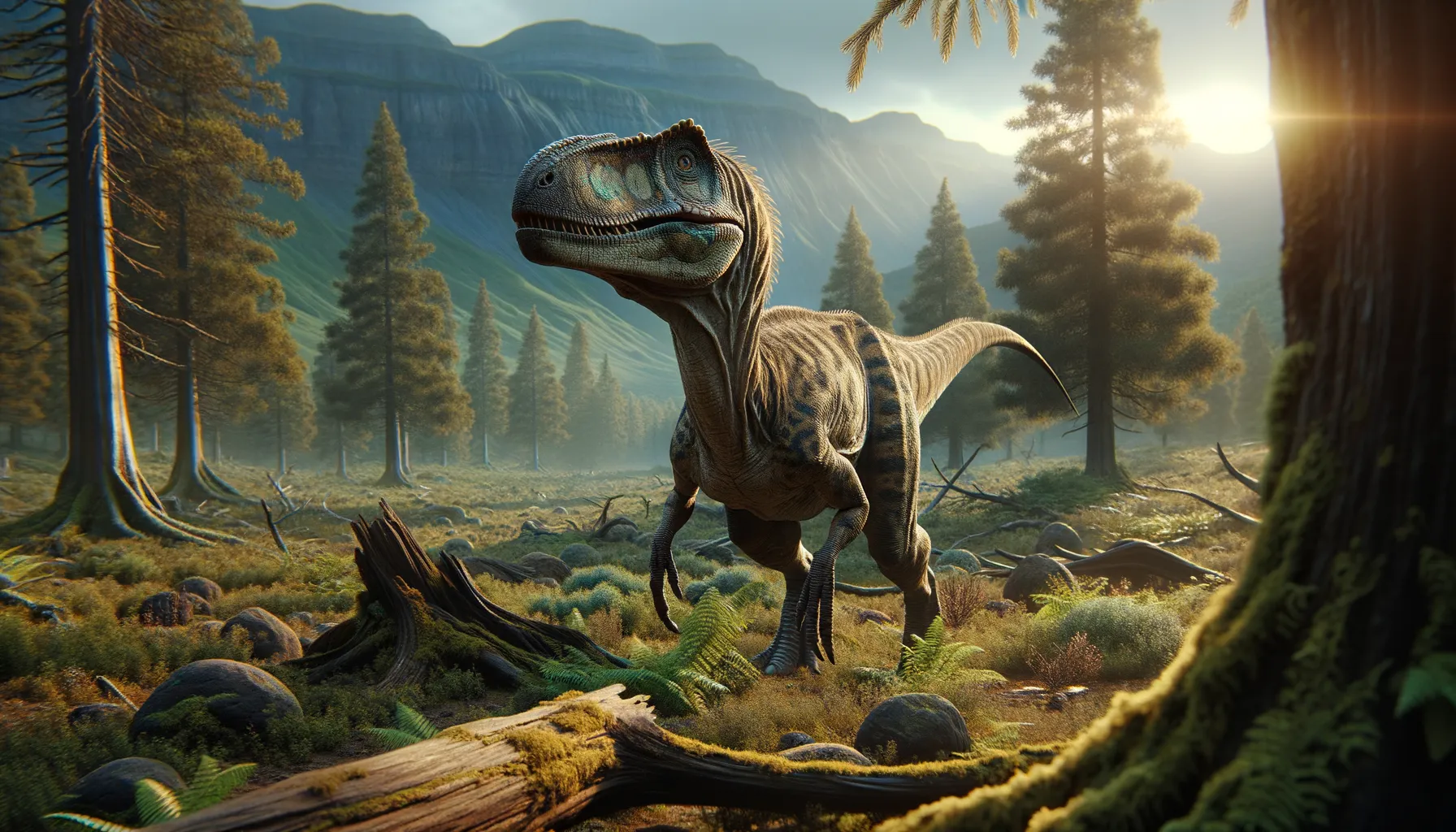
Piveteausaurus
Fearsome predator of the Jurassic lands!
Period
Jurassic
Length
Roughly 5 meters long.
Height
About 2 meters tall.
Weight
Approximately 500 kg.
Piveteausaurus was a medium-sized predatory dinosaur from the Jurassic period, known for its unique nasal crest. Discovered in France, its fossils offer insights into the diverse theropods of its time. Mainly recognized from cranial remains, its exact classification is still under study, but it is believed to have been a bipedal predator, possibly covering a wide range in search of prey and adapting to various ecological niches.
Diet
Piveteausaurus was a carnivorous dinosaur, likely preying on smaller dinosaurs and other vertebrates. Its sharp teeth and strong jaw suggest it was well-suited to catching and consuming meat, and it may have scavenged carrion when the opportunity arose.
Hunting
As a predator, Piveteausaurus likely relied on stealth and speed to capture prey. It may have used ambush tactics, hiding in dense vegetation or using the landscape's natural features to approach its targets undetected.
Environmental challenges
Living during the Jurassic period, Piveteausaurus faced a variety of environmental challenges, including fluctuating climates and shifting landscapes. Volcanic activity may have intermittently affected their habitat, altering the local ecosystem. Additionally, competition from other predators would have required adaptability to maintain its hunting grounds and resources.
Speed
Moderate, comparable to other medium-sized theropods.
Lifespan
Estimated to be around 25 to 30 years.
First discovery
Discovered in 1923 in Normandy, France.
Fun Facts
- Piveteausaurus was a carnivorous dinosaur that lived during the middle Jurassic period around 164 million years ago.
- Its fossils were discovered in France and it's one of the few dinosaurs found in that region from its time period.
- Piveteausaurus is known mostly from its skull, which suggests it might have had a strong bite and a good sense of smell.
- Despite being discovered in 1923, it took many years for scientists to piece together what this dinosaur might have looked like.
- Its name honors French paleontologist Jean Piveteau, who made significant contributions to the study of ancient vertebrates.
- Piveteausaurus was likely a top predator in its ecosystem, preying on smaller dinosaurs and other animals.
- This dinosaur helps scientists understand the diversity and evolution of theropods in Europe during the Jurassic period.
Growth and Development
Like other theropods, Piveteausaurus would have experienced rapid growth during its early years, reaching near full size within a few years. Its development from a hatchling to an adult would have involved changes in diet and behavior. Juveniles might have relied on smaller prey and gradually taken on larger challenges as they grew.
Habitat
Piveteausaurus inhabited what is now Europe, in regions that were likely lush with vegetation and filled with various prey species. Its environment would have included forests, open plains, and possibly near water sources. Being a versatile predator, it adapted to different terrains, using the dense cover to its advantage when hunting.
Interaction with other species
Piveteausaurus coexisted with various other dinosaurs, both prey and competitors. Interactions with these species would have been dominated by predation and competition for food resources. Territorial disputes might have occurred with other predatory dinosaurs, influencing their hunting strategies and social behaviors.
Natural lifespan
In optimal conditions, could live up to 30 years.
Reproduction
Reproductive strategies likely involved laying eggs, as with many theropods. Nests would be built in secluded, safe locations to avoid predation. Parental care might have been present, with adults protecting and possibly feeding hatchlings until they were capable of fending for themselves.
Social behaviour
While primarily a solitary predator, Piveteausaurus might have exhibited some social behaviors during certain activities like hunting or mating. Seasonal gatherings could occur for mating purposes, while competition among individuals could influence social hierarchy and territorial boundaries.
Fossil locations
Fossils primarily found in Normandy, France, providing crucial insights into Jurassic life in Europe. This limited fossil distribution suggests either a regional habitat preference or scarcity of fossilization conditions. Continued research might uncover additional sites, expanding our understanding of its range.
